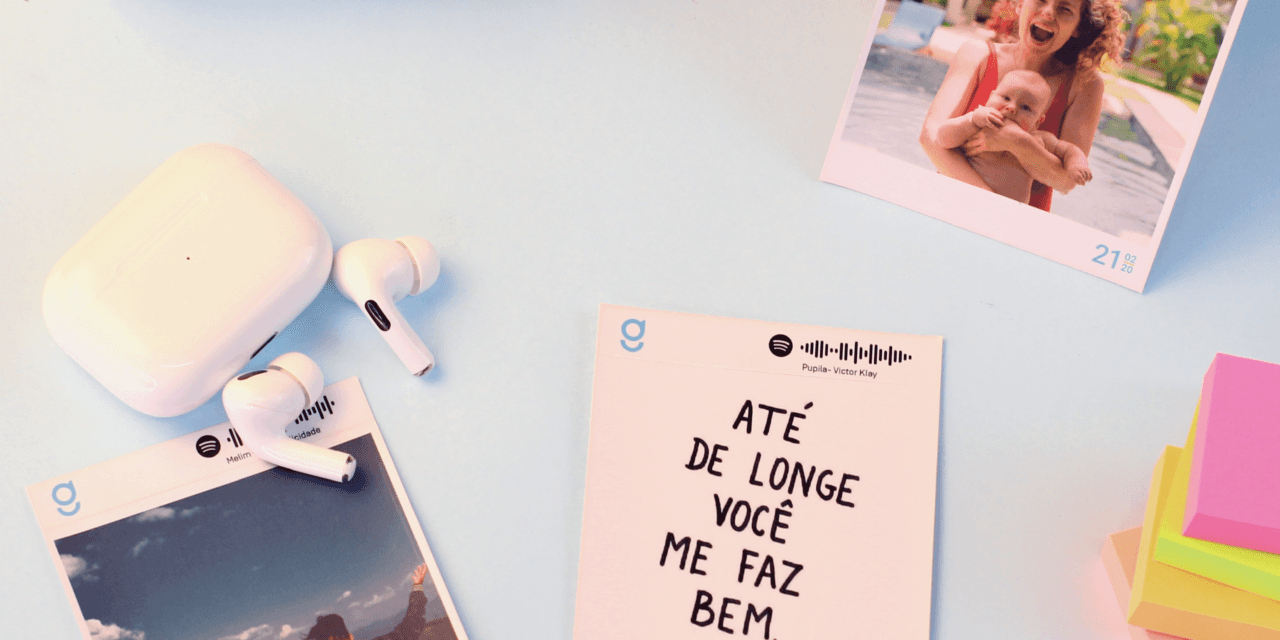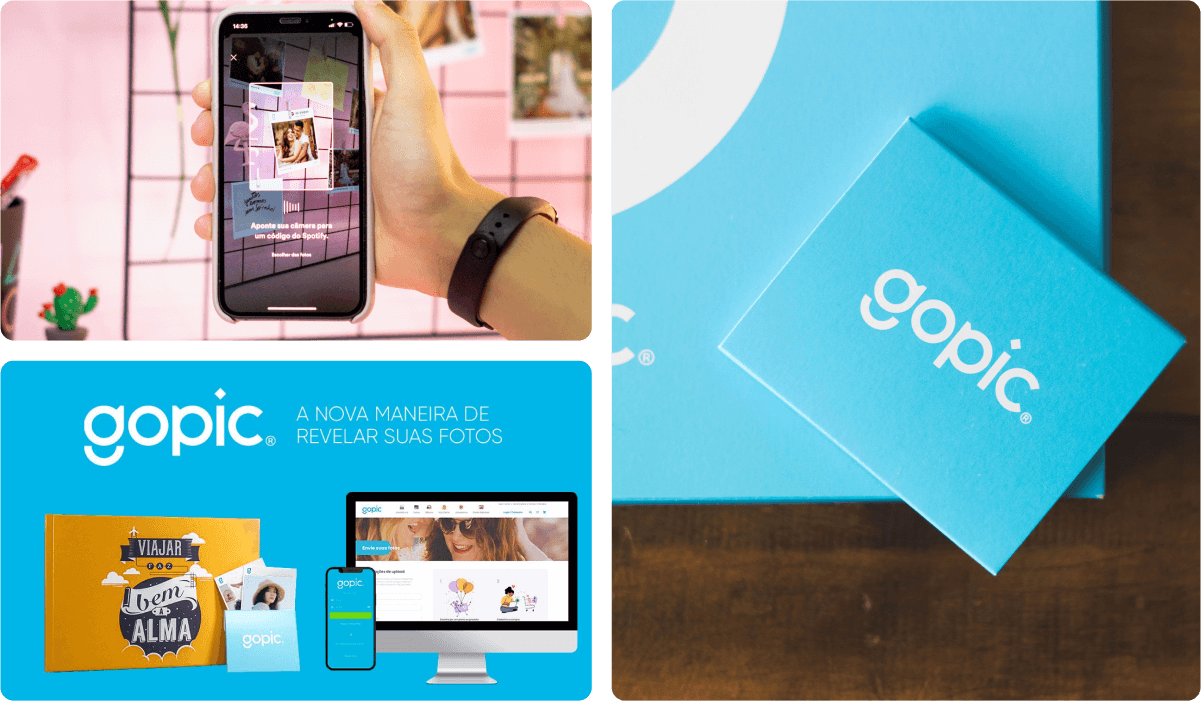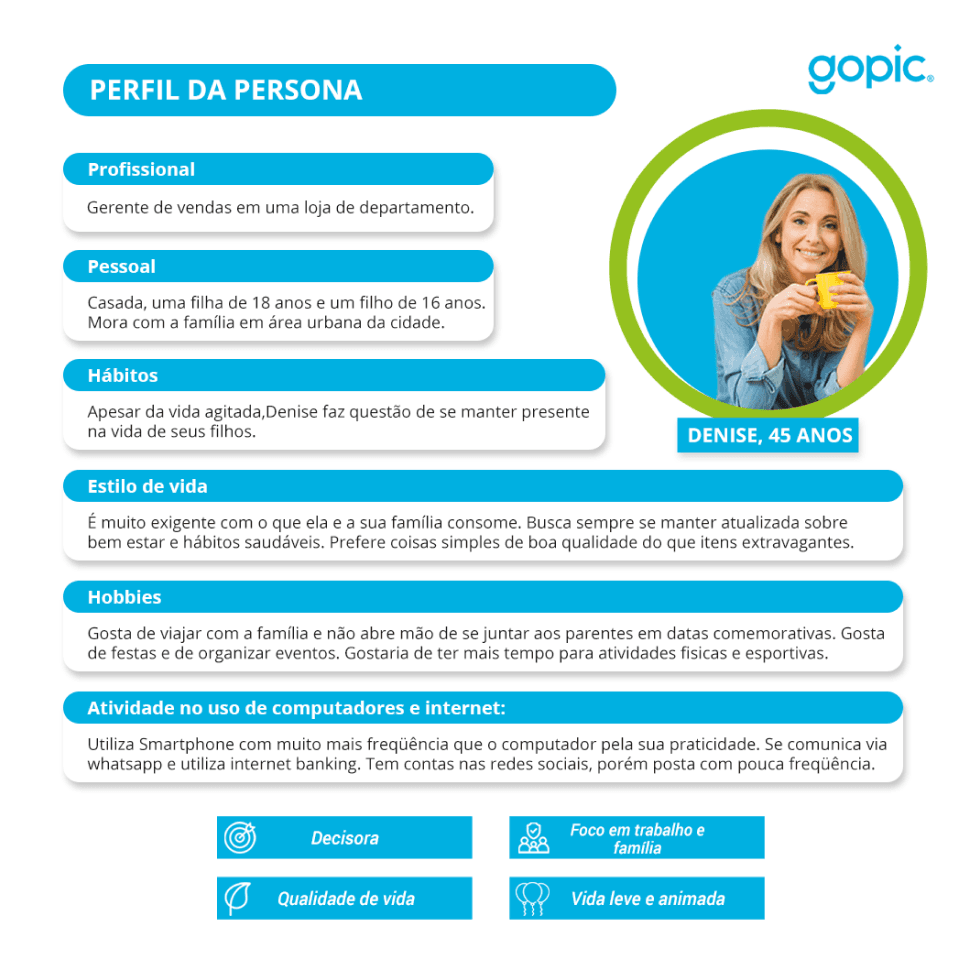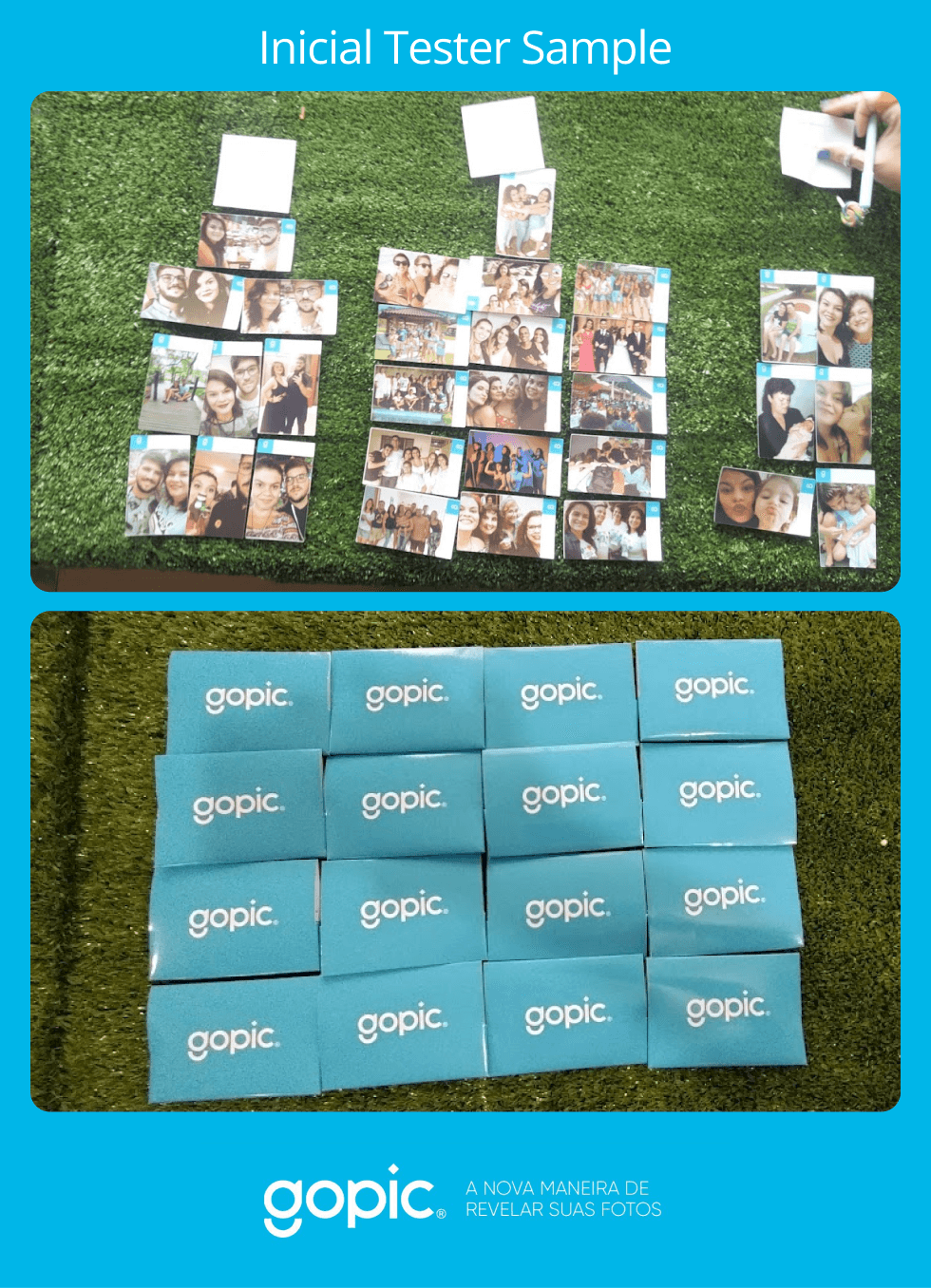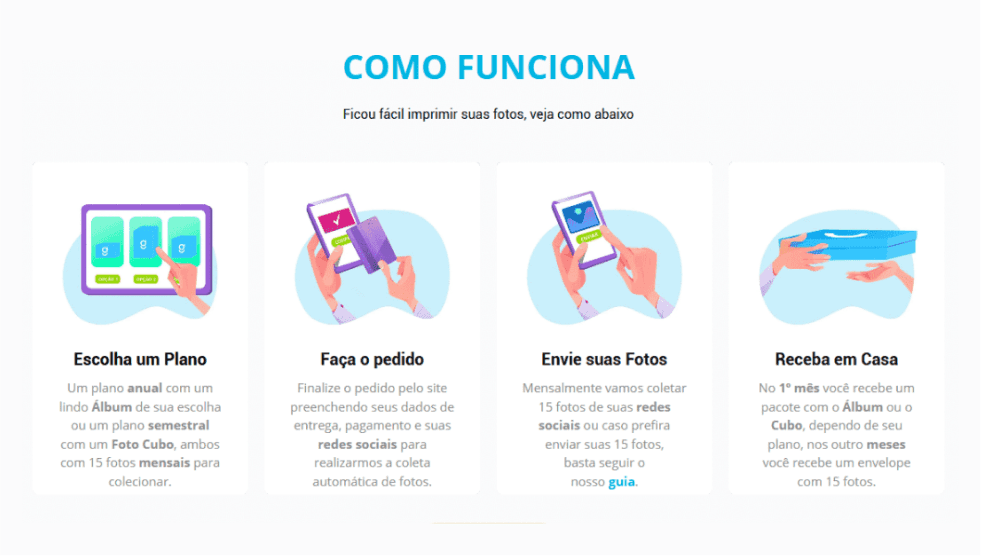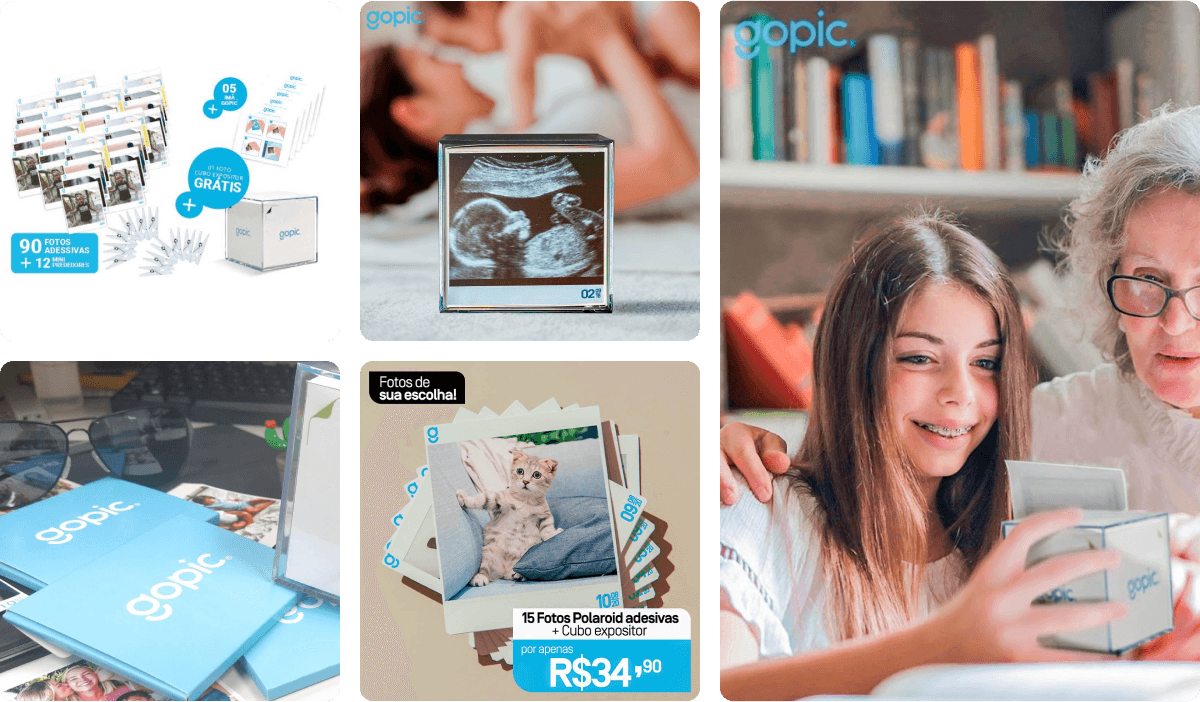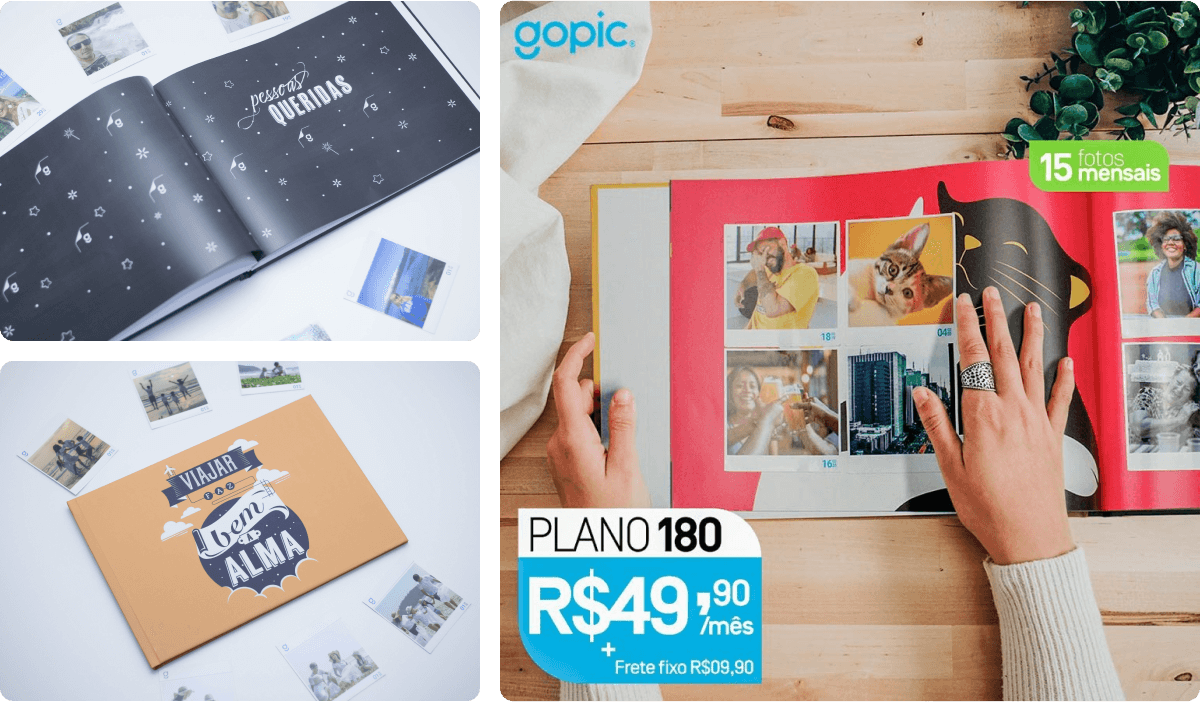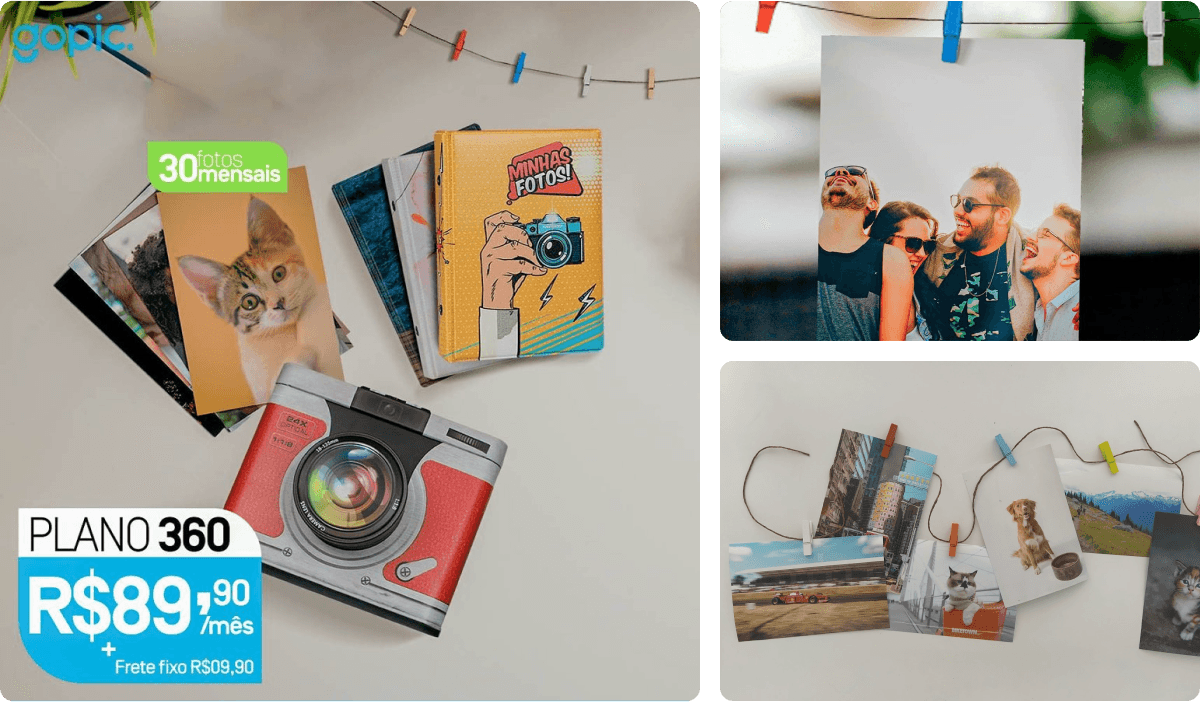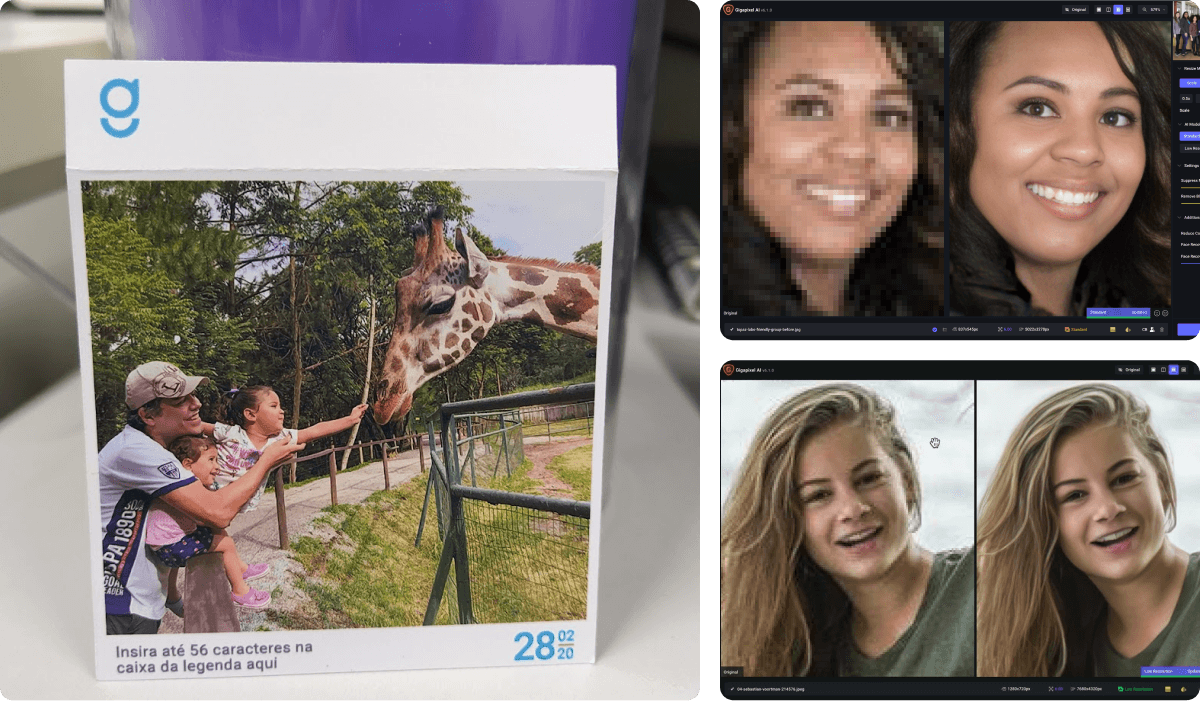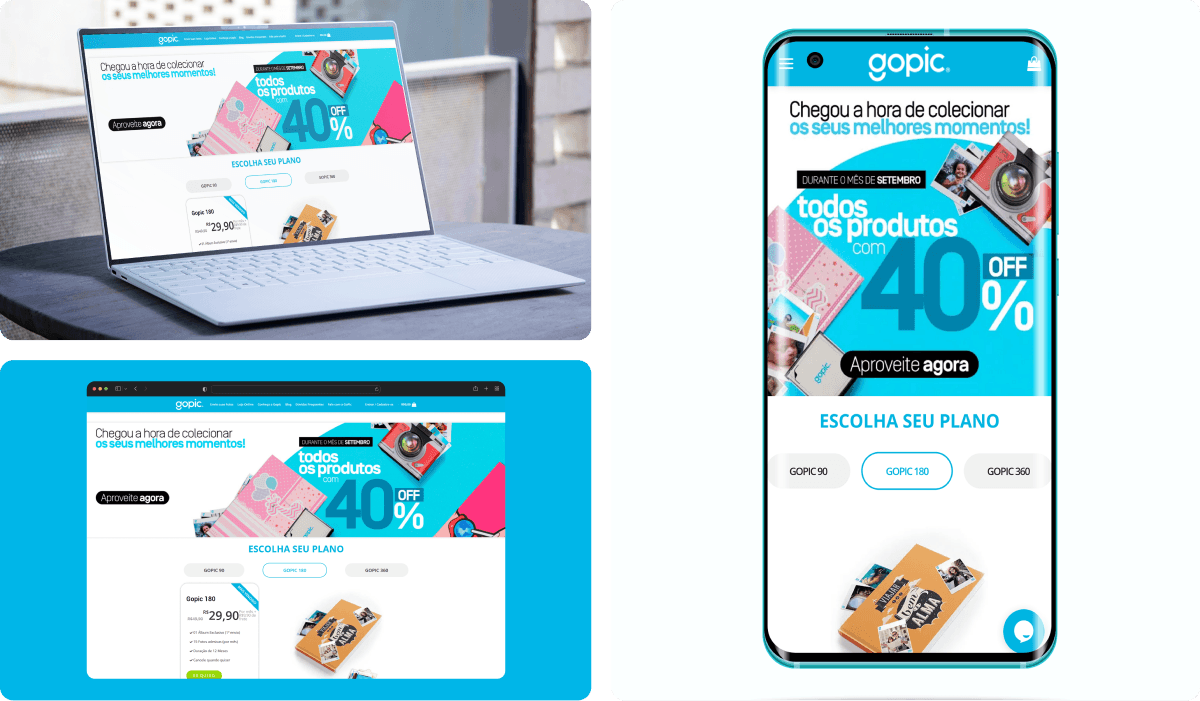Gopic
November 2020
Role: Product Designer
GoPic is an innovative product that bridges the gap between digital and physical memories, allowing users to preserve their most cherished moments through high-quality printed photographs. By syncing their social media accounts or Google Photos, users receive monthly prints of their most recent photos, or they can select a personalized theme for their album—such as Travel, Baby, Family, Friends, or Neutral.
A standout feature of GoPic is its partnership with Spotify, allowing users to select a song for each printed photo. Users can scan the printed photos with their phones to listen to the song associated with the memory, adding an emotional layer to each image.
Timeline
Project Start: Initial concept and user research in 2019.
Design & Development: 2019 - 2020, including wireframing, prototyping, and testing.
Launch: 2020, during the pandemic era, leveraging strategic partnerships and influencer marketing.
Background
The product was launched in a highly competitive market, during the pandemic, when digital experiences were more important than ever. The marketing strategy focused on family and emotional connections, emphasizing how printed photos are the only way to ensure that memories are preserved forever, as the cloud can be unreliable for long-term storage.
User Personas:
We identified a broad spectrum of users, including young individuals, older adults, families, and people from varying income levels. Personas were developed based on detailed demographic research, ensuring that we understood the diverse needs of our potential users.
User Feedback & Testing
Every three weeks, we sent users a selection of photos they had synced from their social media or Google Photos. They provided feedback via short surveys on the quality of the photo selection. Additionally, we asked users to record videos of themselves receiving and using the product, which provided invaluable insights into the usability of the design.
Key takeaway
Users struggled to separate adhesive photos from the prototype, which led us to introduce a semi-cut feature to facilitate photo removal.
Our primary goal was to keep the process simple for users. All they needed to do was link their Instagram or Google Photos account, choose a plan, and the rest was managed by our team. We designed three plans:
GoPic 90
90 photos in an acrylic cube (15 photos per month).
GoPic 180
180 photos in a photo album (15 photos per month)
Gopic 360
A vintage-style album with traditional photo paper and 30 photos per month.
Results
Sales Success:
Thanks to the pandemic-era marketing strategy, which involved sending GoPic products to Brazilian celebrities and influencers with personalized letters, we saw a 1200% sales growth, as projected by the marketing team. The influencer-driven campaigns went viral, significantly boosting brand awareness and user adoption.
Operational Challenges
While the success was overwhelming, the scaling of production was a significant hurdle. The surge in orders led to a bottleneck in fulfillment, as the company lacked the manpower to manage the demand and produce the products each month.
User Engagement & Feedback
The user feedback was overwhelmingly positive, with many users appreciating the simplicity and emotional value of the product. The ability to tie photos to music brought an extra layer of nostalgia, strengthening the connection between the product and the users' memories.
A bold tactic that just works
Key Learnings
Start Smaller
I would have started with the GoPic 90 as a proof of concept for a year, allowing us to test the product's viability and streamline the production process before introducing the more complex GoPic 180 and GoPic 360.
Scale Gradually
The surge in demand underscored the need for more careful scaling. A slower, more measured launch would have allowed us to manage production capacity more effectively.
